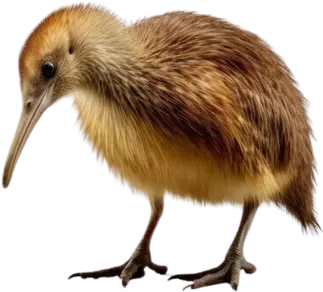New Zealand’s national parks aren’t just a bunch of scenic spots on a map—they’re alive, changing with every season, offering something fresh no matter when you visit. You could be sweating through a summer hike in Tongariro, crunching autumn leaves in Fiordland, spotting frozen waterfalls in winter, or walking through wildflower-filled valleys in spring. Each season brings its own magic (and its own challenges), so knowing what to expect can make all the difference.
Here’s a breakdown of New Zealand’s national parks by season—what’s good, what to avoid, and where to go for the best experience.
Summer (December – February): Long Days & Peak Hiking
Summer is prime time for tramping, and let’s be honest—this is when most people head outdoors. The days are long, the tracks are dry, and the landscapes are looking their absolute best.
Best spots in summer:
- Tongariro National Park – The Tongariro Alpine Crossing is at its peak, with clear skies and stunning views. Just be ready for crowds—it’s no hidden gem.
- Abel Tasman National Park – Golden beaches, turquoise waters, and walking trails you can kayak alongside? Yes, please.
- Fiordland National Park – Great Walks like the Kepler Track and Routeburn Track are in full swing. Fiordland is wet year-round, but summer gives you the best shot at sunshine.
Things to watch out for:
- It gets hot—NZ’s sun is harsh, so slap on sunscreen.
- Sandflies. Especially in Fiordland. They don’t care if you’re a tourist or a local.
Autumn (March – May): Cooler Hikes & Golden Landscapes
Autumn is underrated. The crowds start thinning, the temperatures are cooler (but still pleasant), and the landscapes, especially in Central Otago, Fiordland, and Nelson Lakes, turn into a painter’s dream with gold, red, and orange hues.
Best spots in autumn:
- Fiordland National Park – Fewer people, stunning reflections on the lakes, and those beech forests turning golden.
- Aoraki/Mount Cook National Park – The Hooker Valley Track in autumn? Absolute perfection.
- Nelson Lakes National Park – For those postcard-perfect lake reflections and crisp, clear days.
Things to keep in mind:
- Days start getting shorter, so plan accordingly.
- Some higher-altitude tracks start getting morning frost—watch your footing.
Winter (June – August): Snow, Silence & Dramatic Views
Winter hiking? Yep, it’s a thing. While some alpine tracks become technical mountaineering missions, others turn into peaceful winter wonderlands. If you’re after quiet trails, moody landscapes, and snow-capped peaks, winter is your season.
Best spots in winter:
- Fiordland National Park – Milford Sound in winter? Next-level stunning. The mist, the waterfalls, the zero crowds—it’s a different world.
- Egmont National Park – The lower trails around Mount Taranaki are still accessible, and the snowy peak makes for unreal views.
- Arthur’s Pass National Park – For experienced hikers, Avalanche Peak is a proper winter challenge with insane panoramas.
Things to watch out for:
- Ice and snow – Many tracks become dangerous without proper gear (think ice axes, crampons, avalanche training).
- Shorter days = less hiking time. Start early.
Spring (September – November): Wildflowers & Fresh Trails
Spring is when everything comes back to life. The waterfalls are pumping (thanks to melting snow), wildflowers are everywhere, and the tracks are still relatively quiet before the summer crowds return.
Best spots in spring:
- Paparoa National Park – Lush rainforests, dramatic limestone cliffs, and the Pancake Rocks in top form.
- The Catlins – Great for wildlife spotting—you might catch sea lions, seals, or even yellow-eyed penguins.
- Tongariro National Park – The volcanic peaks still have a dusting of snow, making the views even better.
Things to watch out for:
- Spring weather is unpredictable—one minute, it’s sunny, the next, you’re caught in a downpour. Pack rain gear.
- Some tracks might still have snow at higher elevations.
So, When’s the Best Time to Visit?
That depends on what you want:
- For classic hikes? Summer.
- For peace and quiet? Winter.
- For stunning colours? Autumn.
- For waterfalls and fresh greenery? Spring.
Every season has its perks—you just need to pick the right track at the right time.
Want more NZ adventure inspo? Check out our guide to Top Family-Friendly Festivals in New Zealand—because let’s be honest, sometimes the best way to enjoy nature is with a good festival on the side.






